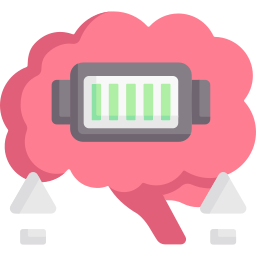GLOSSARY
H
Habit
Learned automatic responses. Habits are response patterns of behaviours performed subconsciously because of context cues, and without the need for conscious goals.


Happiness
A composite of life satisfaction, coping resources, and positive emotions.


Hatred
A negative (i.e. unpleasant) intergroup emotion based on the perception that out-group members are harmful to oneself, one’s group or one’s group members. Hatred stems from the appraisal that the harm is (...)


Heebie-jeebies
A state of extreme nervousness caused by fear, worry, or strain. This emotional response is evoked when one comes across unpleasant stimuli (also termed as getting the jitters or the willies), but it is a distinct emotion from disgust.


Heightened Sensitivity
An individual difference influencing the extent to which an individual is high on sensory-processing sensitivity. Highly sensitive people are often aware of subtleties in their surrounding but more easily overwhelmed when they have been out in a highly stimulating environment for too long.


Heimat
Pronounced “hi mat.” A German term that relates to one’s sense of strong attachment to a place.


Helplessness
The belief or perception that any effort to improve or change a negative situation is lost before it is attempted. Helplessness can stem from isolation, grief, stress, trauma, or even mental health conditions.


Heuristics
A rule of thumb procedure or formula that has worked in the past and may guide problem-solving in the future.


High-Quality Connections
Connections and relationships marked by mutual positive regard, trust, and active engagement on both sides. High-quality connections result in greater engagement, openness, and feelings of competence between individuals.


Hope
A cognitive set that is composed of a reciprocally derived sense of successful (a) agency (goal-directed determination) and (b) pathways (planning of ways to meet goals).


Hopelessness
An unpleasant emotion arising from the belief that one has no solution to serious life problems, often viewing suicide as the only way out of an intolerable situation. Hopelessness is often seen as a core characteristic of depression and (...)


Horror
An emotional state characterized by abnormal physical agitation (shuddering, tingling, screaming) which is caused by a stimuli/ being that is physically and perhaps morally threatening. The threatening stimuli/being has the (...)


Hostile Attribution Bias
The tendency to interpret the intention of others as hostile when social context cues are ambiguous. People who exhibit the HAB think that ambiguous behavior of others is hostile and often directed toward them, while (...)


Hostility
An attitudinal predisposition to feelings of anger, resentment, and enmity, often with concomitant aggressive behavior. See also: hostile attribution bias.


Humour
Any event shared by an agent with another individual that is intended to be amusing to the target and the target perceives as an intentional act. Amusing communications that produce positive emotions and cognition in the individual, group, or organization.


Hygge
Pronounced “hue-gah”, hygge is a Danish word denoting the feeling of warmth, shelter, comfort, safety, and happiness. It is also the feeling of the self being one with others around them, which affirms and invites intimacy and (...)


Hypercognized Emotions
An emotion for which a society possess an elaborate cognitive structure. One indicator of hypercognition is that the society has large number of lexical entries (or words) for that emotion. For example, (...)


Hypnagogia
A sense of foggy confusion caused by the transitional state of consciousness between wakefulness and sleep.


Hypocognized Emotions
An emotion for which society possesses little knowledge. One indicator of hypocognition is having few or no lexical entries (or words) for that emotion. For instance, if a society categorizes “feeling ill”, “troubled” and “fatigued” under (...)


Hypothalamus
The body’s master gland located below the thalamus regulating hormonal & internal regulation of bodily functions as directed by the brain.


Hypothalamus, Pituitary and Adrenal Gland Axis (HPA)
This system regulates cortisol secretion from the adrenal gland in response to prolonged stress through a series of activations of these three structures. Repeated activation of the HPA axis in response to chronic stress leads to (...)


